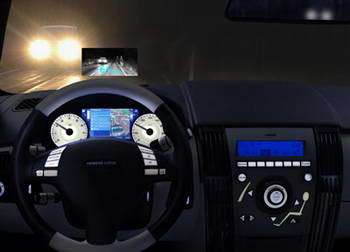Night Vision System for Cars

At the International Motor Show (IAA) in Frankfurt, Siemens has introduced a night vision system that works with infrared technology. With this innovation, Siemens has also become the first automotive industry supplier to create a prototype of an electronic pedestrian marking system. One quarter of all serious traffic accidents take place in the evening or at night. And about one third of all traffic fatalities are the result of accidents during these hours.
That’s why Siemens VDO Automotive has developed an infrared system that’s up to series production standards. Night Vision makes a vehicle’s darkened surroundings visible out to a distance of 150 meters. Night Vision generates an electronically processed video image that can be displayed in real time either in the head-up display or on a TFT monitor in the instrument panel.
Depending on the automotive industry’s design requirements, Night Vision works with two different systems. With the near-infrared system, two barely noticeable infrared emitters are integrated into the headlights. The infrared light they produce is captured by a small camera positioned close to the rear-view mirror. The second system, a solution in the long-wave spectral range, a high-resolution infrared camera is installed behind the radiator grille. Using a wavelength of six to 12 micrometers, it detects the infrared heat radiation from the vehicle’s surroundings, which is displayed as a negative image: Objects that are cold — because they are inanimate — appear darkened, and living things are displayed as bright objects.
The pedestrian marking in the video image has been realized by Siemens VDO as a prototype with image processing electronics. This analyzes all the image data according to temperature differences and typical shapes and marks pedestrians on the monitor with a warning. It will be some time before these special features will be ready for market launch.
The advanced development phase for an exclusively video-supported Night Vision system has been completed, however. Production as part of a network of driver assistance systems could be launched in 2008. In addition to the electronic recognition and evaluation of a vehicle’s surroundings, Siemens VDO sees comfortable interaction between driver and system as the most important development priority.















